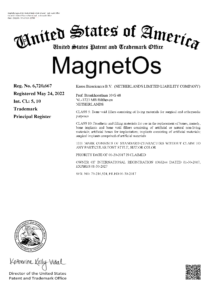
Today was the big day for the Trademark Office to make up for lost time. It issued 6001 paper registrations on May 10, then memory-holed them. Then there were around 7000 paper registrations that ought to have been issued on May 17, and that did not happen. Finally today the Trademark Office issued 20838 US trademark registrations. That was about seven hours ago. The registration numbers that got handed out on May 10 were in the range from 6720667 to 6726667. Those were supposed to become paper registration certificates but that never actually happened. (They got memory-holed.) Those registration numbers got handed out again today. In addition, another 14838 registration numbers got handed out today, which were the make-ups from May 17 as well as the registrations that would normally have gotten issued today. The highest registration number that got handed out today is 6741504.
But what did not happen was the actual electronic trademark registration certificates.
Just now, at around 7 AM Eastern Time, the Trademark Office has uploaded the actual electronic trademark registration certificates to TSDR. So now it is actually possible for these 20838 customers of the USPTO to download the actual electronic trademark registration certificates.
You can click here to see the lowest-numbered US trademark registration certificate that the Trademark Office registered today (6720667). You can click here to see the highest-numbered US trademark registration certificate that the Trademark Office registered today (6741504).
It is interesting to note that they are all digitally signed on May 19, 2022 (five days ago) or May 20, 2022 (four days ago). So the certificates were actually created four or five days ago.

If the certificates were actually signed by some robot on May 19, 2022, or May 20, 2022, does the signature date constitute the actual date on which the trademark registration issued for any purpose?
Let’s see if I understand you. See for example US trademark registration number 6720667 which I mention in the article. It has a link to the actual electronic registration certificate. Which, yes, was cryptographically signed by the USPTO, using the USPTO’s private Acrobat cryptographic key, on May 19, 2022. I guess you are wondering does this maybe mean the mark was “registered” on that day instead of on May 24, 2022? I think if you were to ask the Director, she would say that when she ink-signed the certificate (which by definition happened on or before the cryptographic signing) she was doing it nunc pro tunc. She was ink-signing it “as of” May 24, 2022. And of course there is the place in the upper left where it says in big characters “Registered May 24, 2022” which reinforces the nunc pro tunc nature of the Director’s ink signature.
I understand the PTO purports to assign some registration date to the certificate. My question is whether the specificity of the electronic signature creates a question as to the actual date of the agency action that constitutes “registration […] upon the principal register.” In the olden, olden days, perhaps grant documents were signed in ink by the Commissioner (or attested by an authorized subordinate) on a date before the registration date, but it would be difficult to prove that the signature date was anything other than the “registration date.” I think there’s a fair reading of Section 7(a) of the Lanham Act as requiring that the certificate “shall state […] the number and date of the registration” as a factual matter, not as authorizing the Director to make up any artificial registration date she likes, and to sign the certificate nunc pro tunc. Under that reading, the existence of the authorized signature is what establishes the agency action, and since the new process advertises the date on which that signature has occurred, perhaps the real date of the agency action is the signature date, and the purportedly different “registration date” is a “material mistake in a registration […] clearly disclosed by the records of the Office.” Perhaps I’m missing another provision of the Act that authorizes this nunc pro tunc signature process.